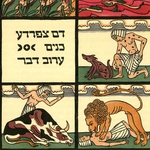Passover in LBI Collections
Passover commemorates the Biblical Exodus of slaves from ancient Egypt
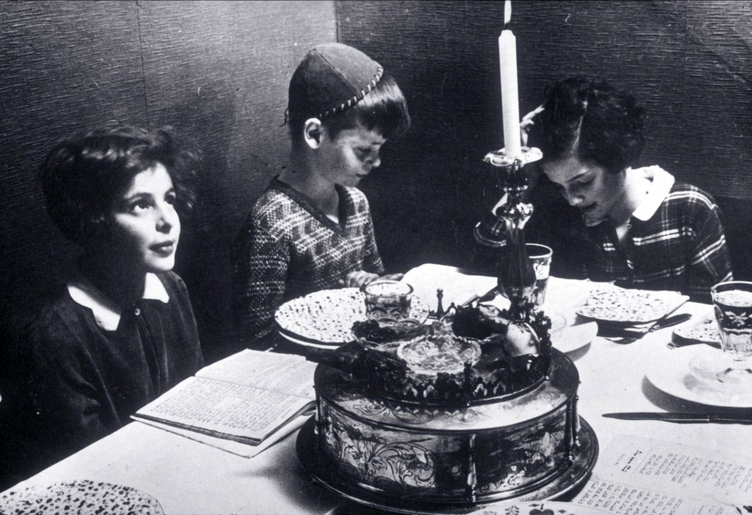
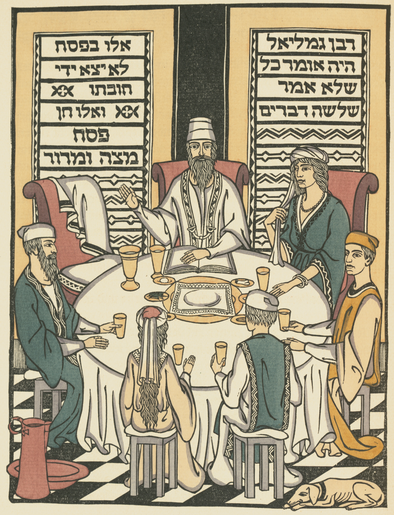
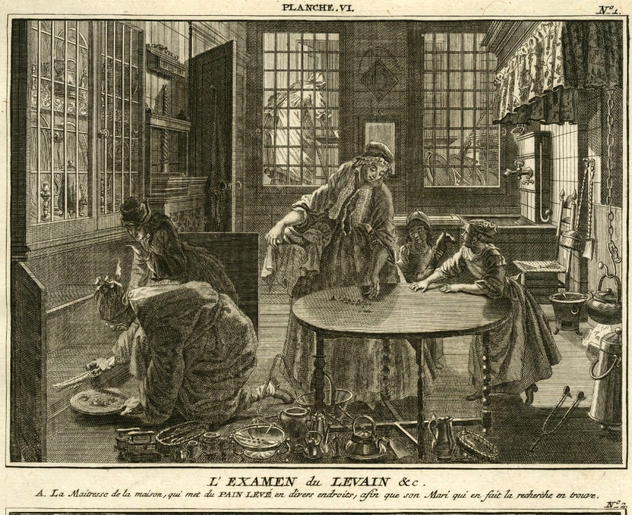
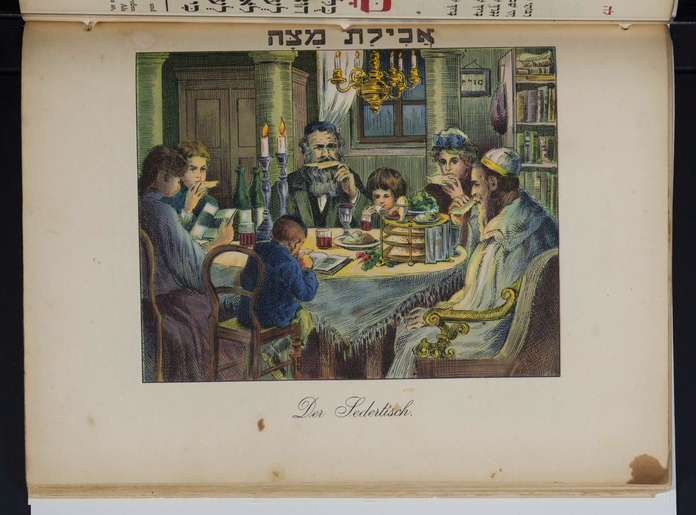
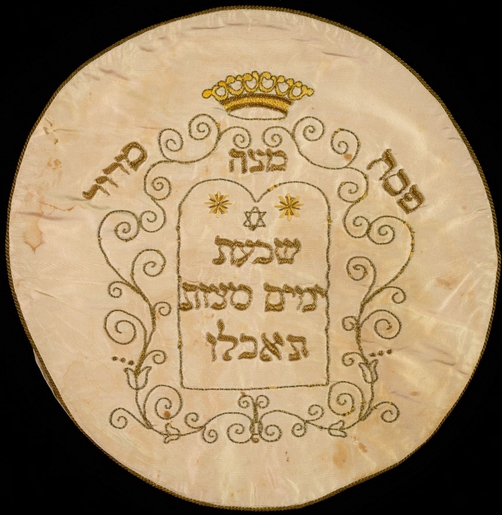
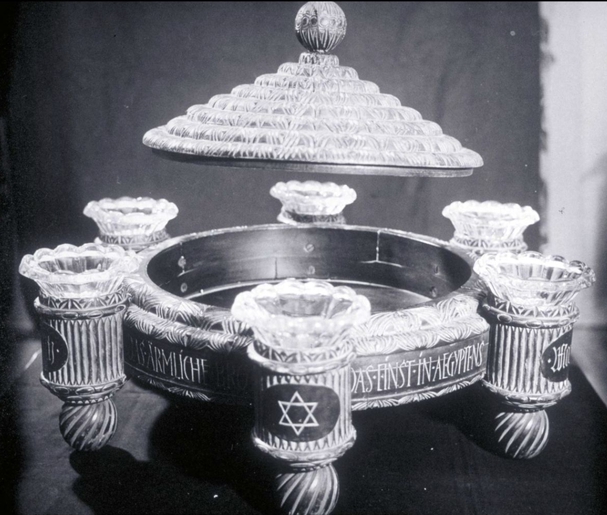
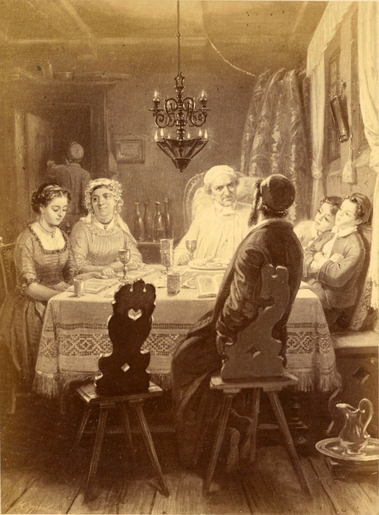
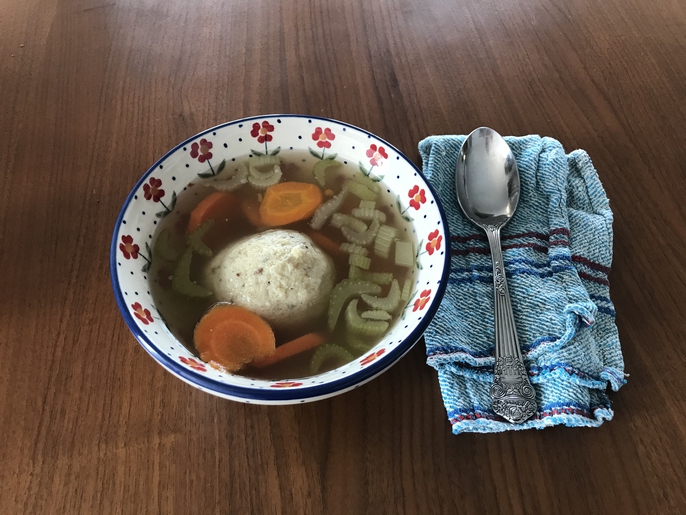
Pessah (Passover) is a weeklong Jewish holiday beginning at springtime’s first full moon. It celebrates the biblical Exodus of the enslaved Jewish people from ancient Egypt, and it is primarily observed by avoiding all leavened food. On the eve of the first day, Jewish families hold a festive dinner, called the Seder, and they read from an ancient text of biblical stories, comments, and prayers, called the Haggadah.
Passover is the major, Jewish springtime festival. Known in Hebrew as Pesach, the holiday begins on the 15th Day of the Hebrew month of Nissan – March or April in the common calendar - lasting for seven days in the Land of Israel and eight days in the diaspora. Passover commemorates the Exodus of the Israelites from Egypt and is according to the Torah one of the three ancient pilgrimage festivals, when ancient Jews were supposed to bring a sacrifice to the Temple in Jerusalem. The most notable observances of the holiday are the Passover Seder and the eschewing of all forms of leavened grains.
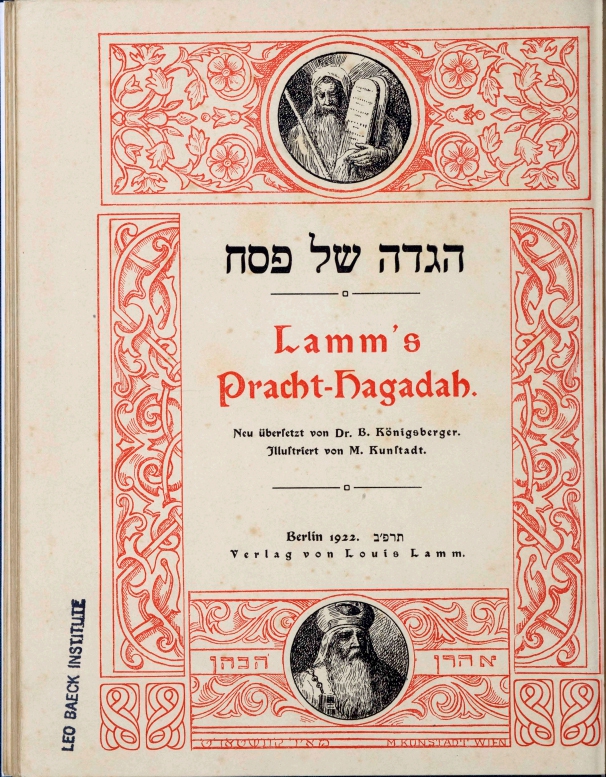
Hagadah shel Pesah = Lamm’s pracht-hagadah / Neu übersetzt von B. Königsberger, illustriert von M. Kunstadt; Berlin : Louie Lamm, 1922. LBI Library collection, q BM 675 P4 B4 1922.
The Seder is a formal meal involving the eating of specific, symbolic foods and the recounting of the narrative of the Exodus from its prequel – the biblical story of Joseph and his brothers in the Land of Israel and in Egypt _up to the actual departure from Egypt and the successful crossing of the Red Sea.
The Hebrew word “Seder” literally means “Order” and indeed, the order of the meal is prescribed in detail by a book called the Haggadah, which means: the “Telling”. The Haggadah is collectively read aloud as the meal is eaten, with each element receiving its own blessing and special attention. Throughout the Haggadah, one finds rabbinic interludes and traditional songs that bolster the Exodus narrative and encourage deeper questioning and reflection. The Seder is held on the night of full moon on the 15th of Nissan; in the diaspora, a second, nearly identical Seder is held on the following day.
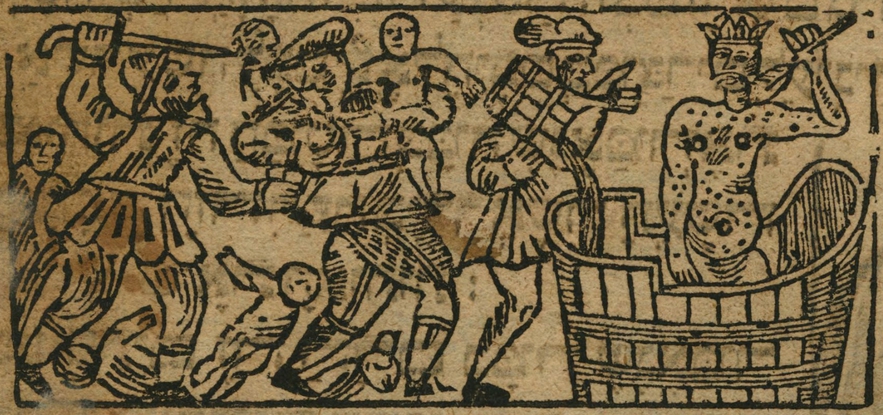
Woodcut in: Mah nishtanah : Hagadah shel Pesaḥ; Prag : Nekhde Mosheh Kats, 447 [1687]. LBI Library collection, call number r (q) 18.
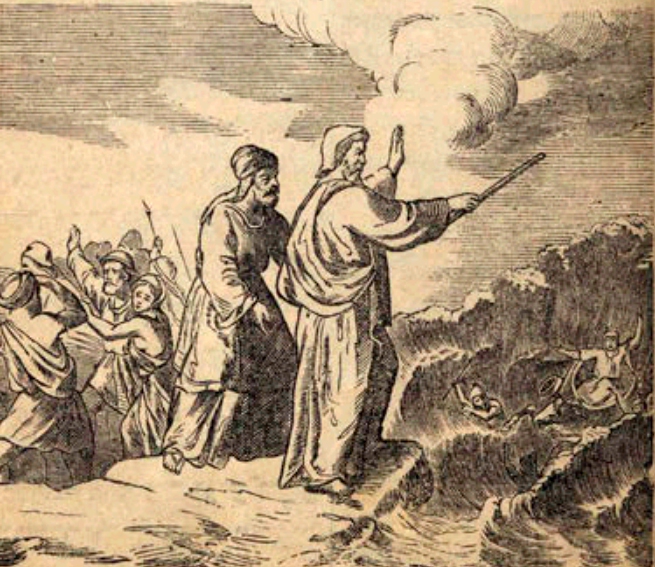
Illustration of Moses parting the Sea, in: Die beiden Pessachabende; Frankfurt a.M. : J. Kauffmann, 1883. LBI Library Collection, BM 675 P4 F7 F8 1883.
The story of the Exodus begins with the Patriarch Jacob (aka Israel) and his 12 children, descending from their homeland into Egypt. Within a few generations, the children of Israel had become numerous in Egypt and were then enslaved by the Pharaoh. One Israelite who had been raised among the Egyptians, Moses, led the slaves through a liberation struggle involving, as the Haggadah tells us, miracles, signs, and wonders. Ten plagues were wrought against the Egyptians with the tenth being the most horrible one: the firstborn son in every Egyptian household was slain by the Angel of Death. Only the Israelites had been instructed to spread the blood of a sacrificial lamb on the doorposts of their homes so that they would be “passed over” on the night of this terrible incident. This is the source of the name “Passover”. Only after the Egyptians had suffered through all ten plagues, which included vermin, epidemics and more, did the Pharaoh allow the Israelites to leave their bondage and begin their long journey through the desert back to the Promised Land.
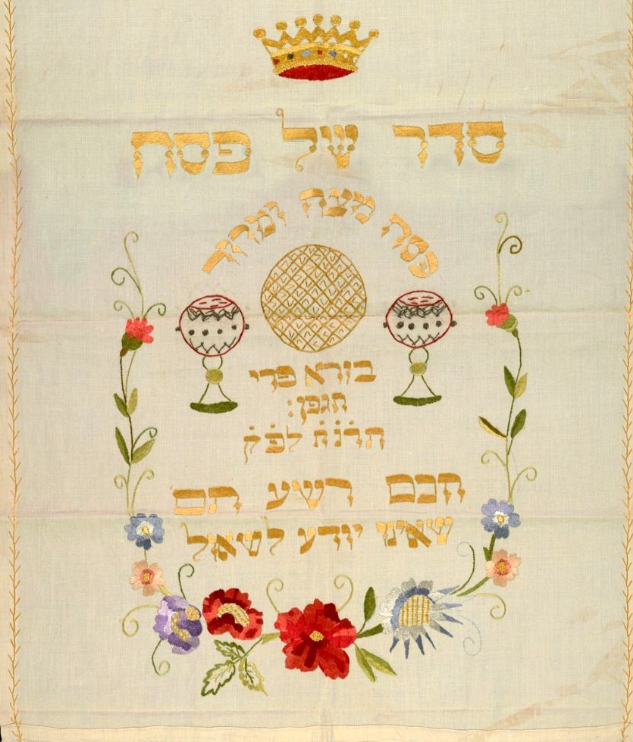
The embroidered round matzah, two wine goblets, a wreath of flowers, and a crown relate to the “Order of Passover” with blessings for “matzah and maror”; the Creator of the fruit of the vine; and the 4 sons asking their 4 questions. LBI Art and Objects Collection, call number 61.24.
Essential to the feast of the Seder are the drinking of four cups of wine; the eating of unleavened bread - known as Matzah; and the enjoyment of a hearty and delicious meal. The matzah commemorates the idea that the Israelites did not have enough time for their dough to rise before fleeing Egypt. By eating this type of bread that was had during the Exodus, we can partially experience the Seder’s story as if it happened directly to us. Given the annual flooding of the Nile River, the Ancient Egyptians were highly dependent on stored grain. Bread was a cornerstone of their success as a civilization. Because of this, the rejection of normal, leavened bread during Passover can be seen as a symbolic rejection of the servitude of the Israelites in Egypt. Many Jews are meticulously careful to uphold the commandment to remove all leaven from one’s premises before Passover, and not to eat nor own or acquire such food until the week’s festival ends.
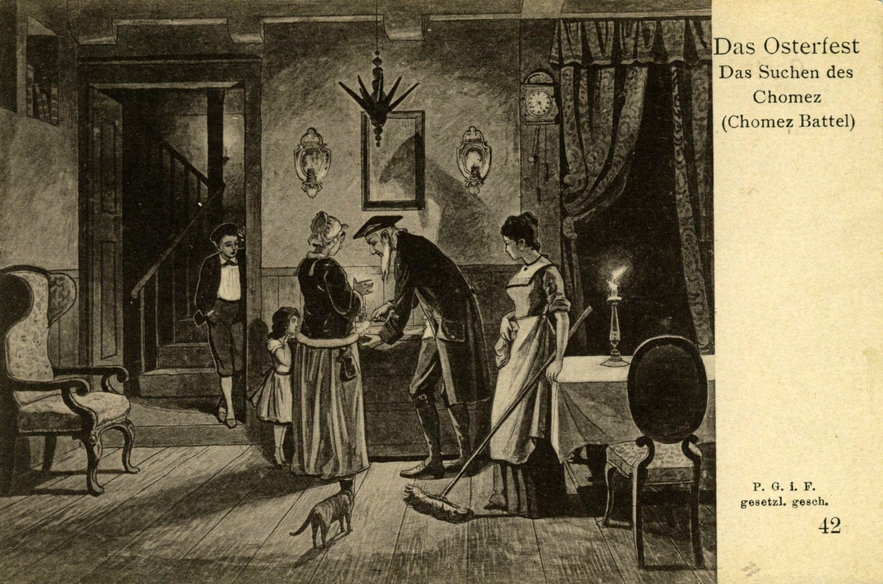
A postcard with Hermann Junker’s rendering of the search for all leavened food before the “Feast of Easter”, in: [Judaism depicted by Hermann Junker]; Frankfurt/Main : Verlag Paul Grödel. LBI Archives call number AR 5123.
The festive meal of the Seder is meant to emphasize the freedom to enjoy one’s self in a way inaccessible to someone who is enslaved. Usually, families come together for the Seder just as the Torah and Haggadah describe each Israelite family sitting down to their own holy meal of sacrificial lamb on the original Passover night. Though it is custom for each family to hold its own Seder, the Haggadah emphasizes that on this night all these families are united in their participation. It is repeated throughout the Haggadah that people of all origins and ages should be included at the table and that all who are hungry are welcomed to eat.
Text by Karel Teifer
